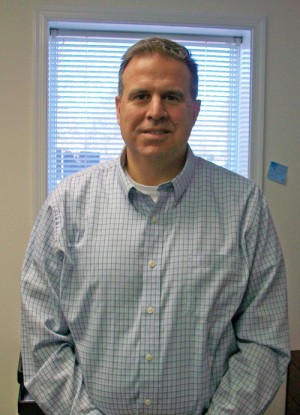
BERLIN — A new approach to knee surgery is providing patients with faster operations and shorter recovery periods, according to representatives from Atlantic General Hospital (AGH).
Even more appealing, said Dr. Tom Beck, D.O., is that the process is less invasive and many patients have reported reduced pain with the surgery when compared to a traditional knee replacement.
Called “Visionaire Patient Match” technology, the new process is centered around using MRI and X-ray pictures to develop a custom-fitted surgery guide that fits directly on a patient’s leg.
“Based on the anatomic landmarks they build a cutting block that fits right over, and it fits perfectly on each patient’s knee, so each one of these is based on a patient,” said Beck, a surgeon at AGH’s Center for Joint Surgery and the practice of Atlantic Orthopaedics
With a traditional knee replacement surgery, Beck explained that cutting blocks in a limited range of sizes are used to guide cuts and metal rods are inserted into the upper- and lower-leg to stabilize.
“When we do a knee replacement in the operating room we have to use alignment jigs to make the appropriate cuts,” he said.
By using the Visionaire system, Beck is able to replace the usual “one-size-fits-all” equipment and the need to insert rods into the femur and the tibia is eliminated. Instead, a custom mold is made by Smith and Nephew Orthopaedics and mailed directly to AGH.
Using the system, Beck said that the average surgery time is about 30 minutes shorter because there are fewer steps. Patients are also recovering faster because the replacement is less impactful on the bones in the leg.
“So a lot less surgery for the patient, less violation of the bone, less bleeding, less swelling, and we found that the patients are getting out of the hospital about a day earlier now,” said Beck.
While the process might sound too good to be true, Beck asserted that he has yet to encounter any downside with the new system. However, Beck and AGH do still offer the traditional knee surgery for patients who are interested. Visionaire does require both a MRI and an X-ray, which means that there is a longer pre-operation period and wait before the actual surgery. Some patients have trouble completing a MRI or have conflicts with their insurance, admitted Beck.
But for anyone interested in the process, Beck gave it his full endorsement and said that, besides the benefits already mentioned, the shorter surgeries mean less time or chance for any kind of infection and the precise molds reduce any risk of misalignment.
“This technology is truly a blessing for my patients,” he said. “I have more confidence in the accurate placement of the implant, while my patients benefit from a simplified procedure. Because the technology delivers pre-sized and pre-aligned instruments, my time in the [operating room] has decreased significantly. For my patients, that means a reduced risk of complications like infection.”
As happy as he is with Visionaire, Beck promised that he isn’t overcommitting to anything.
“Any new technology you don’t want to be the first but you don’t want to be the last,” he said.
Beck has been using the custom instruments since August and has done about 20 of the new surgeries so far. He explained he waited for the process to prove itself but made sure to get involved while it was still relatively fresh. Visionaire Patient Match technology has been out for about a year, according to Beck, and spent a year before that in development.
More information on Visionaire Patient Match technology is available by contacting the Center for Joint Surgery at 410-641-9131.
